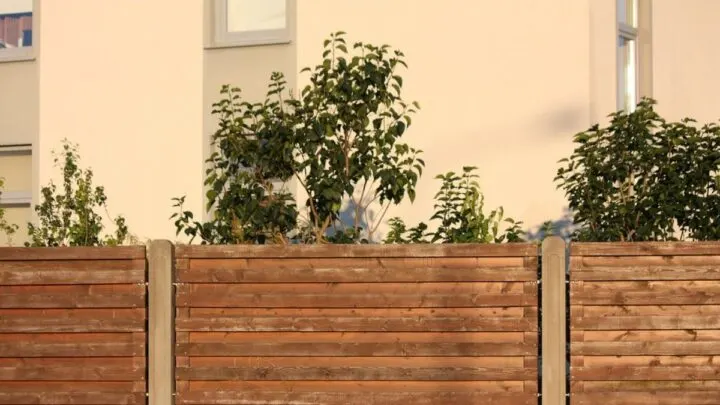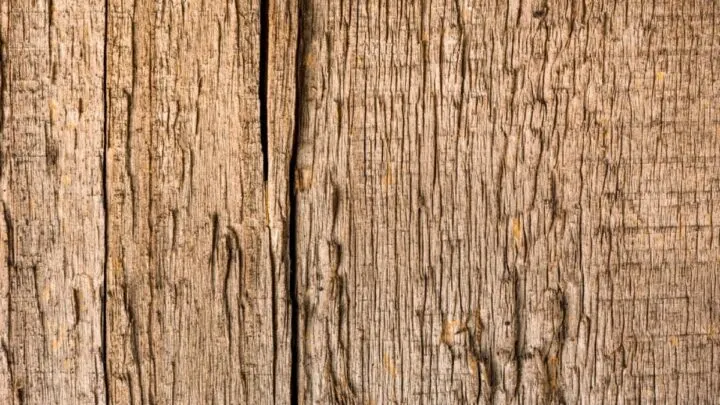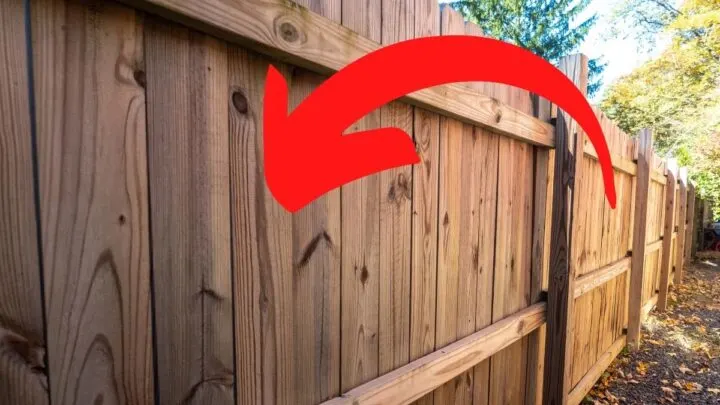A beautiful wooden fence separates your property from the rest of the world. When you open your home’s front door, you can watch in peace as your dog frolics in the front and back yard.
But a wood fence does not last forever. It will need to be maintained regularly so that it can protect everything that is inside from the outside.
Protecting a fence from rotting requires some serious elbow grease, the right sealant, and the right practices. There are two main types of rot to fight and bugs will be your constant enemy, so make sure to consult a professional to help properly protect the fence.
To be prepared, always look for sales on paint and sealant and extra wood. Also, get in the habit of regularly walking along the borders of your fence and looking over each plank.
How to Protect a Fence from Rot
Protecting a fence from rotting is not as easy as applying a sealant and walking away for five years. A homeowner must be active and constantly check on their fence.
Most contractors that put in fences advise checking over the entire fence once a year.
The homeowner must also look over the bottom of the fence a couple of weeks after major weather events like rain and snow.
But with the right practices, the homeowner can protect their wood fence and keep it standing for 20 years or more.

Use the Right Wood
The two most common types of wood used in fencing are redwood and cedarwood. These two types of wood are used in home construction projects and fencing because they have natural chemicals that make them resistant to mold, rot, and certain types of bugs.
But that does not mean these two types of wood are strong. They’re actually somewhere in the middle when it comes to wood strength. But the main trade-off between using redwood or cedar and a stronger type of wood comes down to other factors.
You can apply several layers of sealants and solutions on other types of wood, but it won’t make up for the wood natural bug and mold resistant oils.
So do not favor strong wood only when designing a fence. Along with cedar and redwood, you can also use cypress wood. There’s a chemical called cypretine inside this wood that bugs do not like, making it more resistant to rot.
Douglas fir is also a popular wood, as it has a very natural light coloring. People who use Douglas fir may not want to paint over it.
Other Pressure Treated Wood
If you have the option and it is in your budget, try to find any of these types of wood that have been pressure treated.
When wood is pressure treated, it is sprayed down with a chemical that makes it resistant to funguses, mole, and termites.
Plus, these chemicals in the pressure treatment can last twice as long as an applied ceiling or preservatives.
Pressure treated wood is especially good for all parts of the fence in the ground.
Choose the Right Sealant or Preservative
Whether or not the wood for your fence is pressure treated or not, it will also need a sealant.
The sealant will add extra protection from molds, funguses, rot, and the elements.
Most sealants last three to five years, so you will have to reapply the sealant several times before finally replacing the entire fence.
Some sealants are also stains, so you can change the color of your fence.
Before applying sealant, sand down the wood to remove the previous sealant. If you do not sand down the wood, the new sealant will not be able to penetrate into the wood.
If it doesn’t penetrate into the wood, then it cannot protect it.
Remove Any Wood Developing Wet or Dry Rot
Rot is like a fungus. It can spread if it is not removed in time. If there is no pressure treated wood at your local hardware store, then there will be wood planks treated with preservatives or sealants.
There are two types of rot to watch out for when you have something made of wood: wet and dry rot.
Wet Rot
You likely know the signs of wet rot already, so let’s go over them just in case.
Most common signs are:
- Some parts of the world are turning darker than the rest of the wood
- You can smell mold on certain parts of the fence
- The wood is soft to the touch
- There is a green, black, white, or red furry layer growing on the wood.

Dry Rot
We all know wood rots because it is exposed to far too much wetness, like rain, humidity, and standing water. But did you know there’s also a type of rot called dry rot?
Dry rot happens when the atmosphere and environment around the wood fence is far too dry.
Even though the wood in a wood fence has been removed, cut, treated, and painted, wood is still a living thing.
If there isn’t a small amount of humidity or moisture in the air, the atmosphere will suck the natural moisture out of the wood and cause each plank to become dry and brittle.
Although dry rot is called rot, it’s not actually rot. It’s more like a fungus that eats away at all of the moisture inside we would.
Along with wooden fences, dry rot can send two story homes crashing all the way down to the basement floor. Contractors regularly get calls from panic homeowners who just found dry rot in their basement.
The signs of dry rot are:
- A white or light gray furry substance appears on the bottom of the wood. This would be mycelium growth.
- Wood appears dried out and the wood is forming cracks.
- There is an odd fungal smell around certain parts of the fence. If you walk along the fence and noticed that there is a strange smell occurring only in one section of the fence, then rot could be forming underneath the soil.
Protect the bottom of the fence posts with a sleeve.
Fencing companies now offer to wrap each post or plank in a wood fence in a special sleeve that makes it harder for mold to develop.
The sleeve also adds an extra layer of protection against water damage. Bugs will find it much harder to bite through the sleeve and get to the wood inside.
These leaves are usually known as plank sleeves, post sleeves, and fencing sleeves. Unless a fencing contractor is having a special, adding the sleeves to fence planks will cost extra.
But these sleeves will help protect the part of the fence that comes into contact with the ground.
Conclusion to Protecting Your Fence from Rotting
A well-maintained wood fence can last 20 to 25 years. Sealants and chemical solutions need to be reapplied every three to five years.
Along with redwood and cedarwood, Douglas fir and cypress are popular and naturally bug resistant. Before reapplying sealant, the wood must be sanded down.


